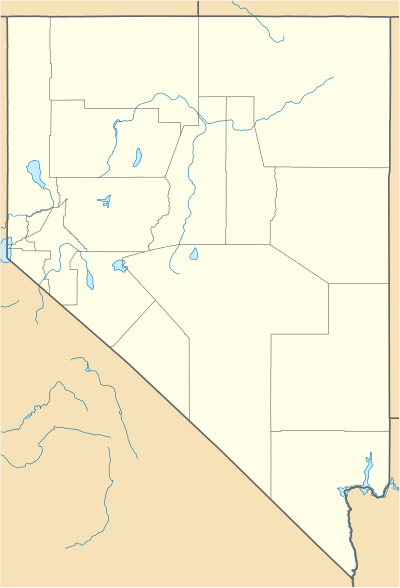

Gold mining in Nevada, a state of the United States, is a major industry, and one of the largest sources of gold in the world. In 2018 Nevada produced 5,581,160 troy ounces (173.6 tonnes), representing 78% of US gold and 5.0% of the world's production.[1][2][3] Total gold production recorded from Nevada from 1835 to 2017 totals 205,931,000 troy ounces (6,405.2 t), worth US$322.6 billion at 2020 values.[2][4] Much of Nevada's gold production comes from large open pit mining using heap leaching recovery.
The Nevada mining industry supported an average 14,787 direct employees in 2018, with about 75,000 additional jobs related to providing goods and services needed by the mining industry. The average pay for mining industry employees during this time was $97,600 per year, the third highest average private employment sector in the state.[2]
Major mining companies such as Newmont Goldcorp and Barrick Gold Corporation operate many of the state's gold mines. Active mines include those at Jerritt Canyon and the Carlin Trend.
Although Nevada was known much more for silver in the 19th century, many of the early silver mining districts also produced considerable quantities of gold. The Comstock Lode produced 8,600,000 troy ounces (270 t) of gold through 1959, and the Eureka district produced 1,200,000 troy ounces (37 t). The Robinson copper mine has produced well over 2,700,000 troy ounces (84 t) gold, along with over 4 billion pounds (1,500,000 tonnes) of copper.
- ^ George, Micheal W. (31 January 2018). "Mineral Commodity Summaries 2018" (pdf). Reston, Virginia: U.S. Geological Survey. pp. 70–71. Retrieved 22 March 2019.
- ^ a b c Perry, Rick; Visher, Mike (2019). "Major mines of Nevada 2018: Mineral industries in Nevada's economy" (pdf). Nevada Division of Minerals. Nevada Bureau of Mines and Geology. Retrieved 16 January 2020.
- ^ "Gold mine production". Goldhub. London: World Gold Council. 4 April 2019. Retrieved 21 January 2020.
- ^ Coyner, Alan R. (4 December 2014). "Update on Nevada Mineral Production and Exploration" (ppt). State of Nevada Division of Minerals. Reno, NV: Northwest Mining Association. Retrieved 27 March 2019.